Public Administration for CSS PMS Handwriting Notes 2024: Free PDF read online
Public Administration for CSS PMS: A Comprehensive Guide to Excelling in Your Exam
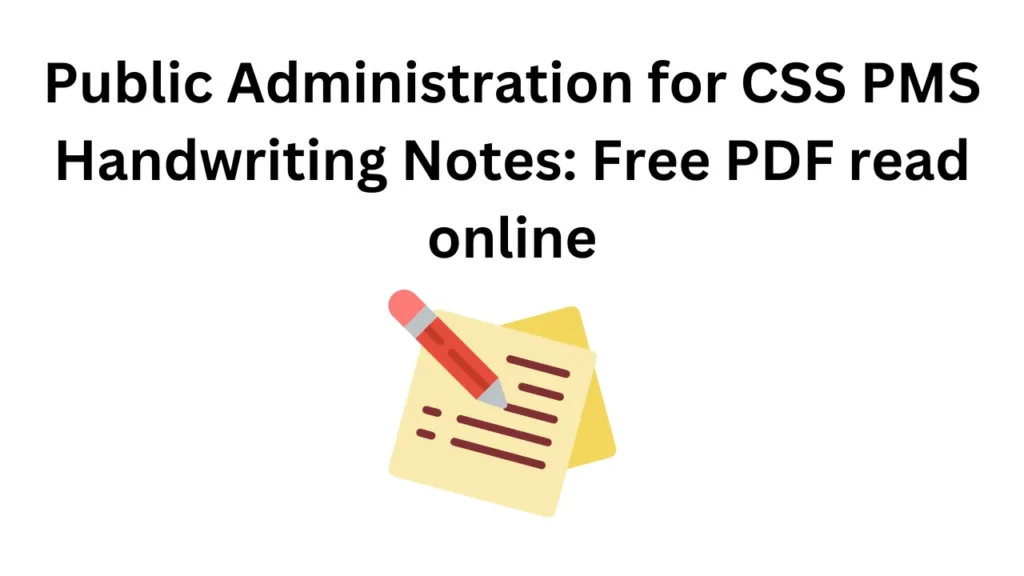
Are you aspiring to join the prestigious civil service through the CSS (Central Superior Services) or PMS (Provincial Management Service) exams? If so, mastering public administration is crucial for your success. This comprehensive guide will walk you through the essential concepts, theories, and practical aspects of public administration, tailored specifically for CSS and PMS exam preparation.
Public administration is not just a subject for exams; it’s the backbone of governance and the key to understanding how governments function. By delving into this field, you’ll gain insights into policy-making, administrative structures, and the challenges faced by modern governments. This knowledge will not only help you excel in your exams but also prepare you for a successful career in the civil service.
In this guide, we’ll cover everything from foundational theories to current trends in public administration. We’ll also provide practical tips for exam preparation and link theoretical concepts to real-world scenarios. Whether you’re just starting your preparation or looking to refine your knowledge, this article will serve as an invaluable resource in your journey toward becoming a civil servant.
Understanding Public Administration
Public administration is the implementation of government policy, the academic study of this implementation, and the broader civil service. It encompasses the organization, management, and operation of government systems at various levels.
The field of public administration has evolved significantly over the years:
- Early 20th century: Focus on efficiency and scientific management
- Mid-20th century: Emphasis on human relations and behavioral aspects
- Late 20th century: Shift towards New Public Management and governance
- 21st century: Emergence of digital governance and collaborative approaches
Key differences between public and private administration include:
- Goal orientation: Public administration focuses on public service and welfare, while private administration aims at profit maximization.
- Accountability: Public administrators are accountable to the public and elected officials, whereas private managers are accountable to shareholders.
- Legal framework: Public administration operates within strict legal and constitutional boundaries.
Understanding these fundamental aspects is crucial for tackling CSS/PMS exam questions effectively.
Core Theories and Concepts in Public Administration
Public administration is grounded in several key theories that have shaped its evolution. Familiarizing yourself with these theories is essential for CSS/PMS exam success.
Also, Check ILmi Capsule One-liner General Knowledge Free PDF Read Online
Classical Theories
- Scientific Management (Frederick Taylor)
- Emphasis on efficiency and standardization
- Time and motion studies to optimize work processes
- Bureaucratic Theory (Max Weber)
- Hierarchical structure and clear lines of authority
- Rule-based administration and impersonality
Neoclassical Theories
- Human Relations Approach (Elton Mayo)
- Focus on social and psychological factors affecting worker productivity
- Importance of informal organizations and group dynamics
- Behavioral Approach (Herbert Simon)
- Decision-making as the core of administration
- Concept of “bounded rationality” in administrative choices
Contemporary Theories
- New Public Management (NPM)
- Application of private sector management techniques to public administration
- Focus on results, customer service, and market mechanisms
- Governance Theory
- Emphasis on networks and collaboration between government, private sector, and civil society
- Shift from “government” to “governance”
Emerging Trends
- Digital Era Governance: Leveraging technology for improved service delivery
- Collaborative Governance: Increased focus on citizen participation and co-creation
- Sustainable Development Administration: Integrating environmental and social considerations into public policy
For CSS/PMS exams, it’s crucial to not only understand these theories but also be able to compare, contrast, and apply them to real-world scenarios.
Structure of Government and Administrative Systems
Understanding the structure of government and various administrative systems is fundamental to public administration. This knowledge is frequently tested in CSS/PMS exams.
Types of Government Systems
- Unitary System
- The central government holds the most power
- Local units derive authority from the center
- Example: United Kingdom
- Federal System
- Power sharing between central and state/provincial governments
- The Constitution defines the division of powers
- Examples: United States, India
- Confederate System
- States retain primary power
- The central government has limited authority
- Rare in modern times (historical example: Confederate States of America)
Separation of Powers
The principle of separation of powers divides government into three branches:
- Executive: Implements laws and policies
- Legislative: Makes laws
- Judiciary: Interprets laws and settles disputes
Understanding the checks and balances between these branches is crucial for CSS/PMS exam preparation.
Levels of Administration
- Central/Federal Administration
- Responsible for national policies and issues
- Manages foreign affairs, defense, and monetary policy
- State/Provincial Administration
- Handles matters within the state/province
- Often responsible for education, law enforcement, and local infrastructure
- Local Administration
- Closest to citizens
- Manages municipal services, local development, and community affairs
Key Administrative Bodies
Familiarity with the functions of various administrative bodies is essential. For example:
- Civil Service Commissions: Responsible for recruitment and management of civil servants
- Planning Commissions: Formulate economic and development plans
- Public Service Commissions: Oversee public sector enterprises
For CSS/PMS exams, be prepared to discuss the roles, responsibilities, and interactions of these various administrative structures and bodies.
Public Policy Process
The public policy process is a core component of public administration and a frequent topic in CSS/PMS exams. Understanding this process is crucial for aspiring civil servants.
Stages of Policy-Making
- Agenda Setting
- Identifying issues that require government attention
- Influenced by public opinion, media, interest groups, and crises
- Policy Formulation
- Developing policy options and proposals
- Involves research, analysis, and consultation with stakeholders
- Policy Implementation
- Putting the chosen policy into action
- Requires resource allocation, coordination, and monitoring
- Policy Evaluation
- Assessing the effectiveness and outcomes of the policy
- This may lead to policy continuation, modification, or termination
Stakeholders in the Policy Process
- Government officials and agencies
- Elected representatives
- Interest groups and lobbyists
- Media
- Think tanks and research institutions
- Citizens and community organizations
Understanding the roles and influences of these stakeholders is important for CSS/PMS exam answers.
Challenges in Policy Implementation
- Resource constraints
- Resistance to change
- Lack of coordination between agencies
- Political interference
- Unforeseen consequences
Being able to discuss these challenges and propose solutions is valuable for exam responses.
Case Studies
Familiarize yourself with both successful and unsuccessful policy implementations. For example:
- Successful: India’s Green Revolution (agricultural policy)
- Challenging: U.S. Healthcare Reform (complexity and political resistance)
Analyzing these case studies helps in understanding the practical aspects of policy-making and implementation.
Human Resource Management in Public Administration
Human Resource Management (HRM) in the public sector is a critical area for CSS/PMS exam preparation. It involves managing the most valuable asset of any organization – its people.
Recruitment and Selection Processes
- Merit-based recruitment
- Competitive examinations (like CSS/PMS)
- Interviews and assessments
- Reservation Policies
- Quotas for underrepresented groups
- Balancing merit and social justice
- Lateral entry
- Recruiting specialists from the private sector
- Pros and cons of this approach
Training and Development
- Induction training for recruits
- In-service training for skill upgradation
- Leadership development programs
- Specialized training for specific roles or departments
Performance Management
- Annual Performance Appraisal Reports (APARs)
- Key Performance Indicators (KPIs)
- 360-degree feedback systems
- Performance-linked incentives and promotions
Ethical Considerations in Public Service
- Codes of conduct
- Conflict of interest policies
- Whistleblower protection
- Anti-corruption measures
For CSS/PMS exams, be prepared to discuss the challenges and best practices in public sector HRM, including recent reforms and initiatives.
Financial Administration and Budgeting
Understanding financial administration and budgeting is crucial for aspiring civil servants. This section is often a significant part of the CSS/PMS public administration paper.
Types of Budgets
- Line-item Budget
- Focuses on inputs (expenditures)
- Easy to prepare and understand
- Performance Budget
- Links funding to specific outcomes or results
- Emphasizes efficiency and effectiveness
- Zero-based Budget
- Requires justification for all expenses each year
- Helps in controlling unnecessary spending
Budget Cycle
- Budget Preparation
- Legislative Approval
- Budget Execution
- Audit and Evaluation
Understanding each stage of this cycle is important for CSS/PMS exam preparation.
Financial Accountability
- Role of Comptroller and Auditor General
- Public Accounts Committees
- Financial propriety and transparency measures
- Preventing and detecting financial irregularities
Fiscal Federalism
- Resource sharing between central and state/provincial governments
- Finance Commissions and their recommendations
- Challenges inequitable resource distribution
For CSS/PMS exams, be prepared to discuss recent budgetary reforms, challenges in financial administration, and the impact of economic policies on public finance.
E-Governance and Digital Administration
E-governance is transforming public administration, making it a crucial topic for CSS/PMS exams. It involves using Information and Communication Technologies (ICTs) to improve government services and interactions with citizens.
Concept and Benefits of E-Governance
- Improved service delivery
- Enhanced transparency and accountability
- Increased citizen participation
- Cost-effectiveness and efficiency
Implementation Challenges
- Digital divide and accessibility issues
- Data security and privacy concerns
- Resistance to change within the bureaucracy
- Integration of legacy systems
- Continuous technological upgradation
Best Practices and Case Studies
- Estonia’s e-Residency program
- India’s Aadhaar (biometric ID) system
- Singapore’s Smart Nation initiative
Future Trends
- Artificial Intelligence in public services
- Blockchain for transparent governance
- Internet of Things (IoT) for smart cities
For CSS/PMS exams, be prepared to discuss both the potential and challenges of e-governance, along with specific examples of successful implementations.
Administrative Reforms and Good Governance
Administrative reforms are ongoing processes aimed at improving the efficiency, effectiveness, and responsiveness of public administration. This topic is crucial for CSS/PMS exams.
Need for Administrative Reforms
- Addressing bureaucratic inefficiencies
- Adapting to changing societal needs
- Improving service delivery
- Enhancing transparency and accountability
Major Reform Initiatives
- New Public Management (NPM) reforms
- Right to Information Acts
- Citizen’s Charters
- Decentralization and local governance
- Public-Private Partnerships (PPPs)
Principles of Good Governance
- Participation
- Rule of Law
- Transparency
- Responsiveness
- Consensus Oriented
- Equity and Inclusiveness
- Effectiveness and Efficiency
- Accountability
Challenges in Implementing Reforms
- Resistance from vested interests
- Resource constraints
- Political instability
- Lack of sustained commitment
For CSS/PMS exams, be prepared to discuss specific reform initiatives, their impacts, and challenges in implementation. Case studies of successful reforms can be particularly valuable in your answers.
Preparing for CSS/PMS Public Administration Paper
Effective preparation is key to success in the CSS/PMS public administration paper. Here are some strategies to help you excel:
Syllabus Breakdown and Key Focus Areas
- Theories and concepts of public administration
- Government structures and processes
- Public policy and decision-making
- Human resource and financial management
- E-governance and administrative reforms
- Current affairs related to public administration
Effective Study Strategies
- Create a study schedule and stick to it
- Use multiple resources: textbooks, online courses, newspapers
- Practice writing essays and answering previous years’ questions
- Form study groups for discussions and peer learning
- Use mnemonics and mind maps for better retention
Tips for Answering Questions
- Read the question carefully and understand what’s being asked
- Structure your answer with an introduction, main body, and conclusion
- Use relevant examples and case studies to support your arguments
- Write legibly and present your answer neatly
- Manage your time effectively during the exam
Common Mistakes to Avoid
- Rote learning without understanding concepts
- Ignoring current affairs and real-world applications
- Not practicing answer writing regularly
- Overloading answers with unnecessary information
- Neglecting presentation and handwriting
Remember, consistent practice and a thorough understanding of concepts are key to success in the CSS/PMS public administration paper.
Read online Public Administration for CSS PMS Handwriting Notes
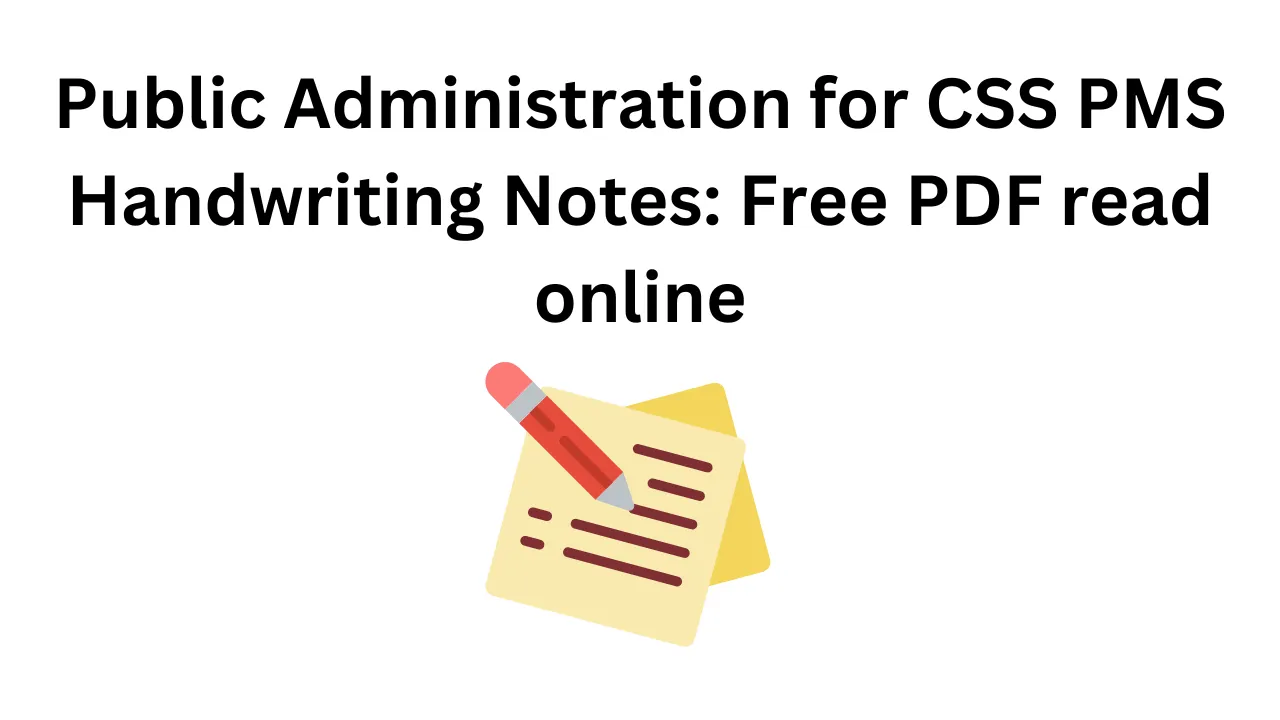

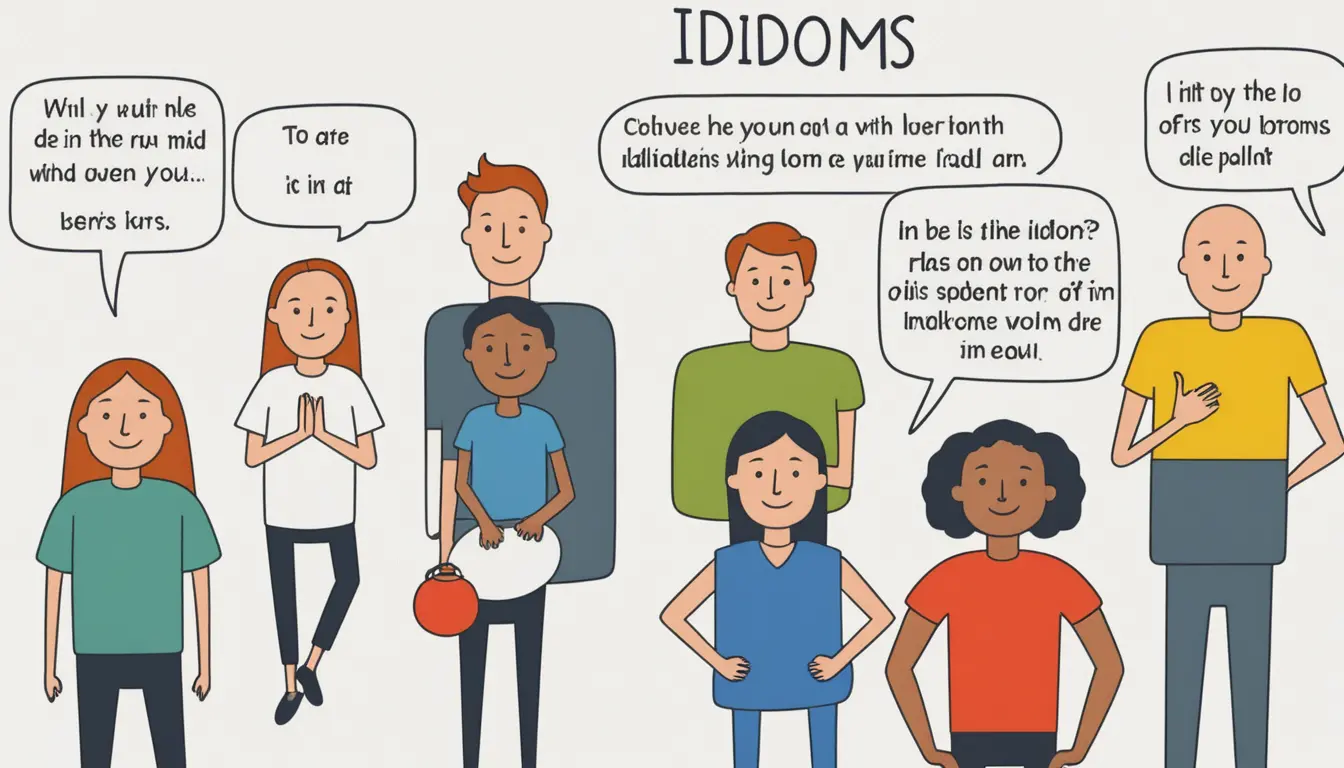






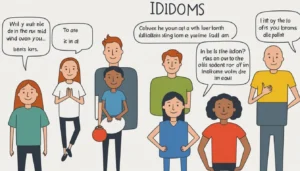

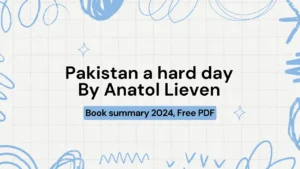

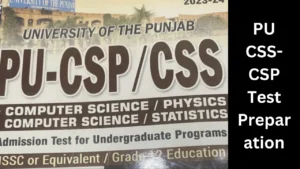
1 comment